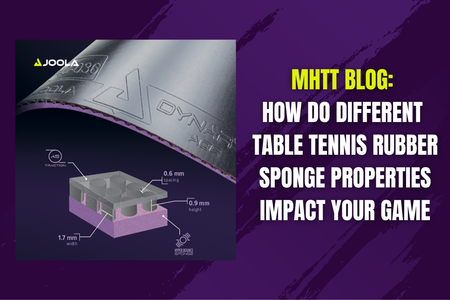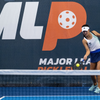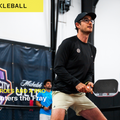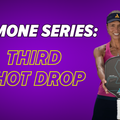
How Do Different Table Tennis Rubber Sponge Properties Impact Your Game | MHTT Blog
There are a many different elements to consider when choosing the right table tennis rubber for your game. It’s especially difficult for those players who are transitioning from a recreational ping pong racket to their first custom table tennis racket. One of the key things to learn about is the properties of the sponge layer in a table tennis rubber, and how they might effect your game or match to your preferences.
In this blog I will talk about some key areas to consider when thinking about the sponge layer of table tennis rubbers – thickness, hardness and density.
Table Tennis Rubber Sponge Thickness
One of the first things that players may want to know is the difference in sponge thickness. For example what is the difference between 2.0 and Max sponge rubbers?
These numbers relate to the thickness of the sponge in millimeters.
Generally thinner sponges are better for developing players and those looking for more control and steadiness in their game. The majority of JOOLA rubbers come in 2.0 or Max which narrows things down and makes it easier to choose. A rubber like JOOLA Samba also has a 1.8 option.
To unlock the maximum potential of a rubber I would definitely personally recommend Max sponge as the best option. With the highest allowable sponge thickness you are able to have greater sponge reactivity.
This means the ball sinks in more in softer sponges to help absorb incoming speed and spin, and has a greater catapult effect in rubbers with medium firm energized sponges with more porous cells.
For defensive players the thicker sponge generally offers greater range, especially for choppers, and can help produce greater spin on the ball, where thinner sponges are great for close and mid range and are super consistent for slowing attacking balls down quickly.
Table Tennis Rubber Sponge Hardness
Generally rubber sponges can be categorized into four main groups – soft, medium, medium-hard and hard.
The majority of players are forehand dominant and prefer to have less hardness on their backhand rubber than their forehand in the topsheet and/or sponge.
Soft sponges offer high levels of control and spin, which helps players looking to develop skills, or build consistency in their game. The more sponge hardness increases, the more speed and power you can build into your shots. Aggressive players often prefer medium-hard or hard sponges on their forehand – and may even have it on both sides of their racket if they attack off both wings. Harder sponges create more power and lower trajectories, which means safety windows over the net are usually lower and require more precision on the player’s part.
Sometimes if you get to very hard sponge levels, the sponges become more dense (which I will cover next) which means you also have to have a very high level of technical ability and play a more physical attacking game.
A good example of a softer sponge rubber is the JOOLA Rhyzen Ice rubber, a fantastic rubber for developing players which has exceptional control and is very consistent. Perfect for blocking and driving, creating good topspin on opening loops and redirection. Of course there is a trade-off and a rubber like Rhyzen Ice with it’s soft sponge doesn’t have too much acceleration or kick and is difficult to generation power on contact.
Table Tennis Rubber Sponge Density
On the flip-side a medium-hard sponge with more catapult, like Dynaryz AGR, can offer great power and even higher levels of spin, but can be much harder to control which places the responsibility upon the player to make the necessary adjustments to strokes and racket angles in order to remain consistent. This is something which requires experience and so often developing players are better off choosing soft to medium sponges.
Density is a third element of table tennis rubber sponges that you need to consider. While the density directly has an impact on the hardness of a rubber, it is more about the ‘cells’ within a sponge. The structure, size and frequency of cells has a major impact on the sponge properties.
Often more dense sponges are less porous, they have less air cells in the sponge. This means the sponge is harder and has less explosion effect. Players can achieve more direct power in their shots by imparting more weight transfer into the ball, so it holds higher power potential – but the responsibility is more upon the player to generate that power. A good example of this kind of sponge is with the JOOLA Golden Tango rubber.
Some sponges are more porous or have larger pores, this is to increase the catapult effect. These sponges often offer a higher arc on the ball and more explosive power from the racket. This means the ball springs off the rubber on contact, presenting less physical strain on the player. These rubbers are great for achieving topspin at different ranges, even further back from the table in counter-loop situations. The JOOLA Hyper Bounce sponge is dynamic in this sense.
In some situations a sponge can be extremely porous, with smaller pores. In this situation the sponge density is lower and offers less catapult effect. These rubbers are great for producing spin and controlling the ball at higher pace. They help increase ‘dwell time’ a common term for the amount of time a ball stays on a rubber to create fiction (of course this is so fractional it’s miniscule anyway).

Sponge Selection is Important for Competitive Table Tennis Players
On your journey to figuring out what kind of equipment is best suited to your game, sponge properties are one of the vital pillars of equipment you will need to understand.
Hopefully this small guide to help explain sponge thickness, hardness and density can help you expand your knowledge and increase your chances of finding the types of equipment that you like the most!




